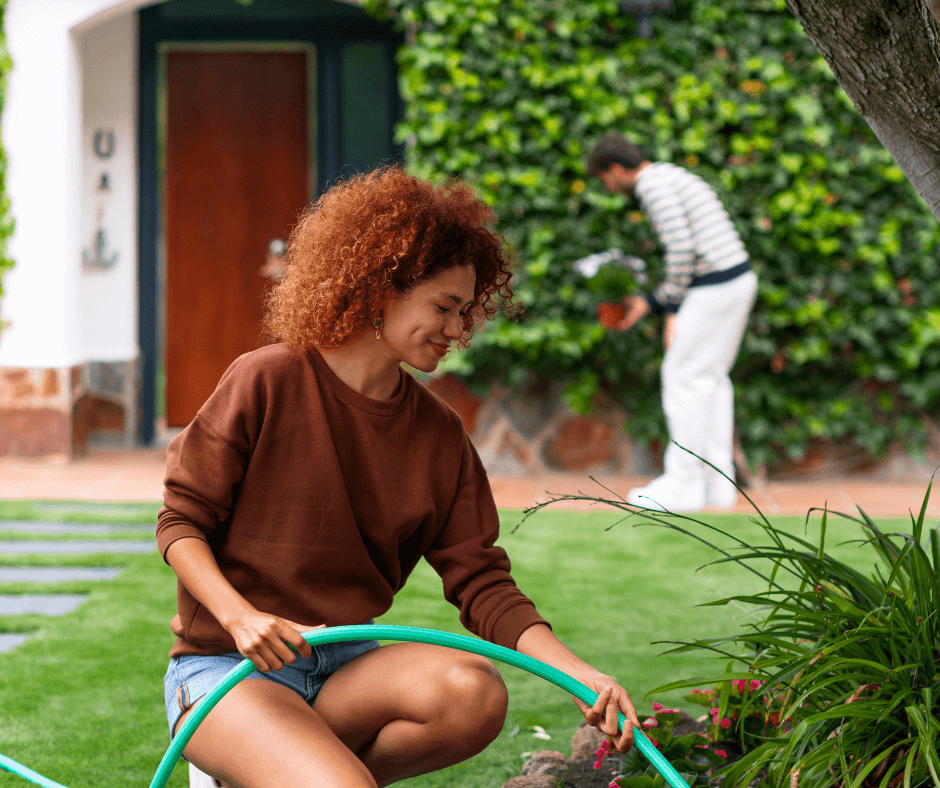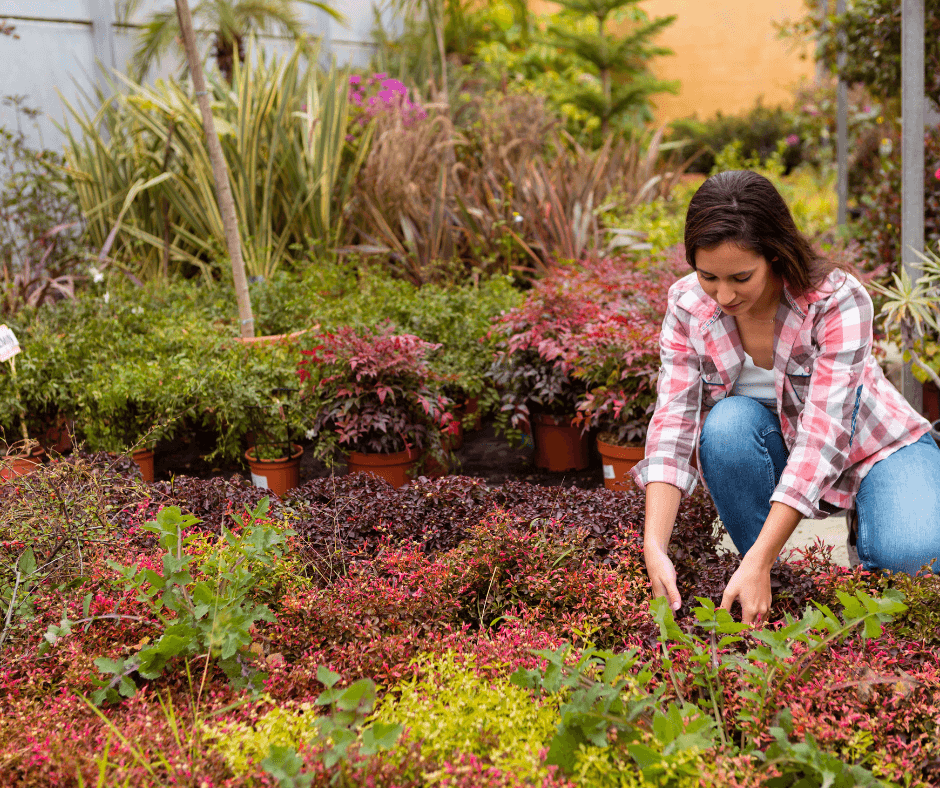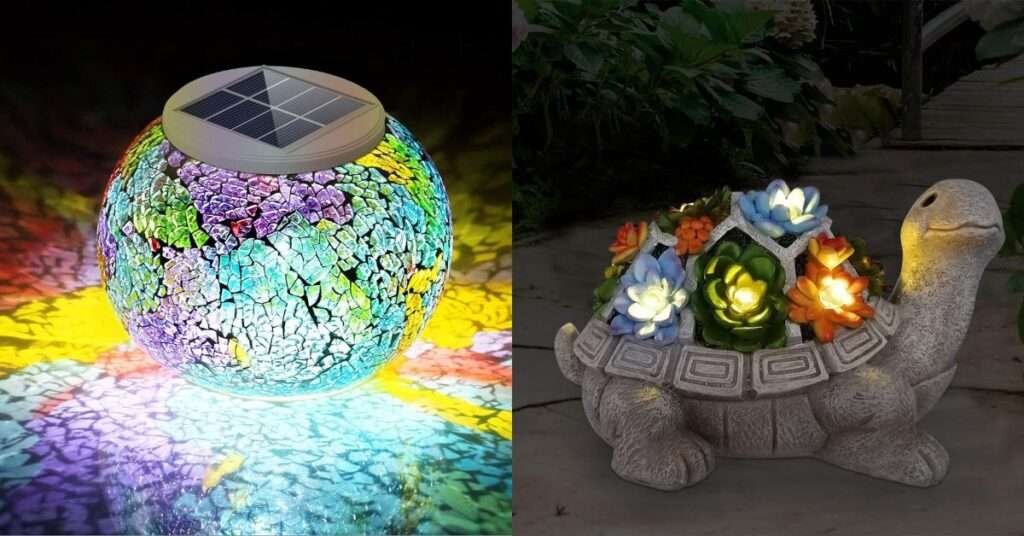When it comes to improving the value, functionality, and aesthetics of your home, outdoor improvements are a great way to enhance your property’s curb appeal and make better use of your outdoor spaces.
Also Read
Whether you have a small backyard or a large garden, there are various ways to upgrade and optimize the exterior of your home. From creating lush, inviting landscapes to installing patios, decks, and outdoor kitchens, outdoor upgrades can make your home more enjoyable while increasing its overall value.
In this article, we will cover several outdoor improvement ideas, including landscaping, hardscaping, outdoor lighting, and eco-friendly solutions, all aimed at transforming your outdoor space into a beautiful and functional area.
We will also touch on sustainable practices, budget-friendly projects, and creative ways to enhance privacy and comfort in your yard.
Landscaping and Greenery
When planning your outdoor improvements, one of the most impactful areas to focus on is your landscaping. A well-designed landscape not only enhances the beauty of your home but also increases its value and creates functional spaces for relaxation, entertainment, and gardening.
1.1 Choosing the Right Plants
Selecting the right plants for your garden is the foundation of successful landscaping. It’s essential to choose plants that thrive in your climate and soil conditions. Opt for low-maintenance plants and drought-resistant plants, especially if you live in regions with water restrictions.
Additionally, incorporating native plants can create a more sustainable garden that requires less water and maintenance.
- Tip: Group plants with similar water and sunlight needs together to simplify maintenance and ensure they thrive.
- Example: Planting native grasses or succulents in areas with poor soil can reduce the need for frequent watering and improve the longevity of your garden.
Affiliate Link: Discover low-maintenance plant options for your garden here.

1.2 Creating a Functional Layout
A functional garden layout is key to making the most of your outdoor space. Divide your garden into zones based on how you plan to use them, such as an area for dining, gardening, or playing. Ensure that the design of your garden flows naturally and that pathways are easy to navigate.
Adding elements like garden paths, raised garden beds, or water features can enhance the overall look and feel of your yard.
- Tip: Consider using permeable pavers or gravel for pathways to promote water drainage and prevent flooding.
- Example: Create a garden path using stepping stones to lead visitors through your garden and connect different zones.
1.3 Lawn Care and Maintenance
A lush, green lawn is a centerpiece for many gardens, but keeping it healthy requires regular maintenance. To keep your lawn looking its best, follow basic care practices such as mowing, watering, and fertilizing.
Consider using organic lawn treatments to keep your lawn healthy while being environmentally friendly. If you live in a dry region, opt for sustainable lawn care practices, such as installing drought-tolerant grasses or replacing traditional lawns with gravel or synthetic turf.
- Tip: Mow your lawn frequently but avoid cutting it too short, as longer grass retains moisture better and promotes root growth.
- Example: Use an organic fertilizer twice a year to keep your lawn healthy without harsh chemicals.
1.4 Adding Garden Features
Adding features like garden beds, water fountains, or outdoor sculptures can transform a simple yard into a visually stunning space. Raised garden beds allow you to grow vegetables, herbs, or flowers while adding structure and texture to your garden.
Incorporating a small water feature, such as a fountain or pond, adds a sense of tranquility and can attract birds and other wildlife.
- Tip: Raised garden beds can be easily built using reclaimed wood or other materials, making them an eco-friendly addition to your yard.
- Example: A small pond or water feature near a seating area can create a peaceful retreat in your backyard.
Affiliate Link: Find DIY raised garden bed kits here.
2. Hardscaping: Enhancing Outdoor Structure
Hardscaping refers to the non-living elements of your outdoor space, such as patios, decks, walkways, and walls. These features are crucial in defining your yard’s layout and adding structure to your landscaping.
By integrating hardscaping with natural elements like plants and trees, you create a balanced, functional, and aesthetically pleasing outdoor environment.
2.1 Patios and Decks
Building a patio or deck is one of the best ways to upgrade your backyard and create an inviting outdoor living space. Patios can be made from a variety of materials, including concrete, stone, or pavers, while decks are usually constructed from wood or composite materials.
When choosing the material for your patio or deck, consider durability, maintenance needs, and how it fits into the overall design of your yard.
- Tip: Choose composite decking for a low-maintenance, eco-friendly option that resists rot and insect damage.
- Example: A stone patio with a fire pit can create a cozy outdoor space for evening gatherings with family and friends.
Affiliate Link: Explore patio and decking materials here.
2.2 Outdoor Walkways and Driveways
Adding walkways and driveways enhances both the functionality and visual appeal of your outdoor space. Walkways can connect different areas of your garden, leading guests from the front yard to the backyard or through different garden zones.
Driveways, meanwhile, provide practical access to your garage or carport. You can use materials like stone, pavers, or even gravel for walkways and driveways, depending on your aesthetic preferences and budget.
- Tip: For a sustainable option, use permeable pavers that allow water to filter through, reducing runoff and preventing flooding.
- Example: A winding stone pathway through a garden creates a charming and functional route from the front yard to the backyard.
2.3 Outdoor Fencing
Installing fencing around your property adds privacy, security, and a finished look to your outdoor space. Choose from a range of fencing materials, such as wood, vinyl, metal, or composite, depending on your needs and design preferences.
Wooden fences offer a classic, natural look but may require more maintenance than vinyl or metal options.
- Tip: For added privacy, consider planting a hedge or installing a privacy screen along your fence line.
- Example: A wooden fence with a built-in lattice top can provide privacy while adding a decorative element to your yard.
Affiliate Link: Check out privacy fence ideas here.
2.4 Retaining Walls and Raised Beds
Retaining walls and raised garden beds are excellent ways to add dimension to your landscape, particularly if your yard has uneven terrain. Retaining walls can help prevent soil erosion and create leveled garden areas, while raised beds offer a designated space for growing vegetables, flowers, or herbs.
Retaining walls can be constructed from stone, brick, or concrete, providing both function and aesthetic appeal.
- Tip: Use retaining walls to create terraced levels in your garden, maximizing usable space on a slope.
- Example: A raised garden bed along a retaining wall provides an ideal space for growing herbs and flowers while keeping the soil contained.
Affiliate Link: Discover raised bed gardening kits here.

3. Outdoor Lighting
Outdoor lighting is a crucial aspect of outdoor improvements, as it enhances the aesthetics, functionality, and safety of your outdoor spaces. Properly installed lighting can highlight architectural features, illuminate pathways, and create a welcoming ambiance for evening gatherings.
With various options available, from decorative to security lighting, it’s easy to find the right setup for your needs.
3.1 Landscape Lighting
Landscape lighting adds both beauty and safety to your garden by illuminating plants, pathways, and architectural elements. Strategically placing lights around trees, flower beds, and other focal points can create a visually stunning environment that is functional even after dark.
Solar-powered lights are a great eco-friendly option that requires minimal installation and no electricity.
- Tip: Use uplighting to highlight tall trees or architectural features, and pathway lights to safely guide guests through your garden.
- Example: Solar-powered lights along a garden path not only enhance safety but also reduce energy consumption and maintenance.
Affiliate Link: Explore outdoor lighting solutions here.
3.2 Security Lighting
In addition to enhancing aesthetics, security lighting plays an important role in protecting your home. Motion-sensor lights and floodlights help deter unwanted visitors by lighting up dark areas of your property, such as the driveway, backyard, or entrances.
Opt for energy-efficient LED or solar-powered security lights to minimize energy costs while keeping your home safe.
- Tip: Install motion-sensor lights near entry points and dark corners of your yard to detect movement and improve security.
- Example: A floodlight near the garage or front entrance can provide ample light for safety and security without the need for constant illumination.
Affiliate Link: Shop motion-sensor lights for your home here.
3.3 Decorative Lighting
Decorative lighting is perfect for creating a warm, inviting atmosphere in outdoor living spaces. String lights, lanterns, and pendant lights can transform patios, decks, or pergolas into cozy evening gathering spots.
Whether you want to host dinner parties or relax outdoors in the evenings, decorative lighting can create the perfect ambiance.
- Tip: Use LED string lights to wrap around trees, pergolas, or outdoor furniture to create a festive yet energy-efficient atmosphere.
- Example: Hang string lights across your patio for a café-style ambiance that enhances outdoor dining experiences.
Affiliate Link: Find decorative string lights here.
3.4 Solar Lighting
Solar lighting is an eco-friendly and cost-effective way to illuminate your outdoor space. It’s ideal for areas without access to electrical outlets, such as garden pathways, driveways, or along the fence.
Solar lights charge during the day using sunlight and automatically turn on at night, offering hassle-free lighting without increasing your electricity bill.
- Tip: Place solar lights in areas that receive ample sunlight during the day for optimal charging and lighting performance at night.
- Example: Solar lanterns can be hung from trees or placed on outdoor tables to provide soft, sustainable lighting.
Affiliate Link: Discover solar-powered lighting options here.
4. Outdoor Living Spaces
Transforming your backyard into a functional and stylish outdoor living space can significantly enhance your home’s usability and appeal. Outdoor living spaces provide opportunities to entertain, relax, and enjoy nature right from the comfort of your home.
From creating cozy patio areas to installing outdoor kitchens and fire pits, these upgrades make your yard an extension of your home.

4.1 Building a Functional Outdoor Kitchen
An outdoor kitchen allows you to prepare and enjoy meals outdoors, making it perfect for entertaining family and friends. Outdoor kitchens can be as simple as a built-in grill with countertops or more elaborate with appliances, refrigerators, and sinks.
Whether you’re cooking for a crowd or just grilling for yourself, an outdoor kitchen adds convenience and value to your home.
- Tip: Include durable countertops like granite or concrete, which can withstand outdoor conditions.
- Example: A built-in grill paired with a granite countertop creates a stylish and functional outdoor kitchen that’s ideal for backyard barbecues.
Affiliate Link: Find outdoor kitchen essentials here.
4.2 Creating a Cozy Patio or Lounge Area
A patio or lounge area is a key element of any outdoor living space. With the right furniture, lighting, and décor, you can create a relaxing environment for reading, dining, or gathering with friends.
Choose weather-resistant outdoor sofas, chairs, and tables, and consider adding elements like fire pits, outdoor rugs, and cushions to make the space more inviting.
- Tip: Add an outdoor rug and cushions made from weather-resistant materials to soften the space and make it more comfortable.
- Example: A wicker sofa set with cushions and a fire pit creates a cozy, stylish seating area perfect for summer evenings or fall nights.
Affiliate Link: Shop outdoor furniture for patios here.
4.3 Incorporating a Fire Pit or Fireplace
An outdoor fire pit or fireplace provides warmth and ambiance, making your outdoor space usable throughout the year. Fire pits are great for smaller patios, while outdoor fireplaces are ideal for larger spaces.
They create a focal point for gatherings and can be used for cooking marshmallows, staying warm on cool nights, or just enjoying the atmosphere.
- Tip: Choose a portable fire pit if you prefer flexibility or a built-in fireplace for a permanent, upscale feature.
- Example: A stone fire pit surrounded by outdoor chairs becomes a natural gathering place for family and friends to enjoy.
Affiliate Link: Explore outdoor fire pits and fireplaces here.
4.4 Installing an Outdoor Pool or Hot Tub
Adding a pool or hot tub to your backyard takes your outdoor living space to the next level of relaxation and enjoyment.
Pools are perfect for exercise, entertainment, and cooling off during hot summer months, while hot tubs provide a soothing retreat for colder evenings.
Both options create a luxurious addition to your backyard and can significantly boost your home’s value.
- Tip: Consider a smaller plunge pool if space is limited or opt for a portable hot tub for flexibility.
- Example: An in-ground pool with a deck and lounge chairs creates a resort-like atmosphere in your backyard, ideal for hosting pool parties.
Affiliate Link: Discover pool and hot tub options here.
5. Sustainable Outdoor Improvements
Sustainable outdoor improvements help you create an environmentally friendly landscape that reduces water usage, minimizes waste, and promotes biodiversity.
Incorporating eco-friendly practices into your outdoor projects not only benefits the environment but also lowers maintenance costs and creates a healthier outdoor space for you and your family.
5.1 Water Conservation with Smart Irrigation
Installing a smart irrigation system is an excellent way to conserve water while keeping your lawn and garden healthy. These systems adjust watering schedules based on weather conditions, ensuring your plants get the right amount of water without overuse.
Additionally, rainwater harvesting systems can be installed to collect rainwater, which can be reused for irrigation, reducing your reliance on municipal water sources.
- Tip: Place a rain barrel under your gutters to capture rainwater, which can be used to water your garden during dry spells.
- Example: A smart irrigation system that adjusts watering based on local weather conditions can save water and prevent over-watering, promoting a healthy garden.
Affiliate Link: Explore water-saving irrigation systems here.
5.2 Sustainable Materials for Outdoor Projects
Choosing sustainable materials for your outdoor projects can reduce the environmental impact of your upgrades. Consider using recycled wood or composite decking, which are durable and eco-friendly.
Additionally, permeable pavers help reduce runoff by allowing water to filter through the ground rather than pooling on the surface.
By selecting these materials, you create long-lasting structures that are kind to the environment.
- Tip: Use composite decking for your patio or deck as it’s made from recycled materials and requires less maintenance than traditional wood.
- Example: Permeable pavers installed in a driveway allow rainwater to seep into the soil, reducing water runoff and flooding.
Affiliate Link: Discover sustainable decking materials here.
5.3 Planting for Pollinators
One of the simplest and most impactful sustainable practices is to plant pollinator-friendly plants that attract bees, butterflies, and birds. These plants not only enhance the biodiversity of your garden but also contribute to a healthy ecosystem.
Choose native flowering plants and shrubs that provide nectar and pollen for pollinators throughout the growing season.
- Tip: Plant milkweed to attract monarch butterflies or lavender to bring in bees and hummingbirds.
- Example: A garden filled with pollinator-friendly flowers like coneflowers, sunflowers, and lavender will boost the health of local wildlife while adding vibrant color to your yard.
Affiliate Link: Find pollinator-friendly plant options here.
5.4 Solar Power Integration
Incorporating solar power into your outdoor improvements is a great way to reduce your energy consumption. Solar-powered garden lights, fountains, and even outdoor heating systems are now widely available and easy to install.
Solar panels can also be added to power outdoor appliances, helping you create a more energy-efficient backyard.
- Tip: Place solar-powered lights along pathways or in garden beds to reduce energy costs while providing lighting at night.
- Example: Installing solar panels on your outdoor pergola can provide renewable energy to power lights and appliances, making your outdoor space more self-sufficient.
Affiliate Link: Explore solar-powered lighting and outdoor appliances here.

6. Enhancing Outdoor Privacy
Creating privacy in your outdoor spaces can make your yard feel more intimate and secluded. Whether you’re looking to block noise, shield your yard from neighbors, or simply create a cozy retreat, there are several ways to enhance privacy while maintaining the aesthetics of your outdoor area.
6.1 Privacy Screens and Hedges
Installing privacy screens or planting hedges is a simple yet effective way to increase privacy in your backyard. Hedges, such as boxwood or arborvitae, offer a natural barrier that can also add greenery to your space.
Privacy screens, available in materials like wood, bamboo, or metal, provide a more immediate solution and can be styled to match the design of your outdoor space.
- Tip: For a low-maintenance option, choose fast-growing hedges or use pre-fabricated privacy screens that require minimal upkeep.
- Example: A row of arborvitae planted along the property line creates a living wall that offers both privacy and beauty.
Affiliate Link: Discover outdoor privacy screens here.
6.2 Outdoor Curtains and Canopies
For a more flexible solution, use outdoor curtains or canopies to create privacy around patios, decks, or pergolas. You can easily install outdoor curtains, draw them for privacy, or leave them open to enjoy the view.
Gazebos and canopies also offer shade and protection from the elements, making them a great addition to seating areas.
- Tip: Choose weather-resistant curtains made from durable fabric to ensure they hold up against the elements.
- Example: A pergola with outdoor curtains creates a cozy, private retreat where you can relax without feeling exposed.
Affiliate Link: Shop outdoor curtains and canopies here.
6.3 Sound Barriers and Fencing
If noise from neighbors or nearby streets is an issue, consider installing soundproof fencing or planting dense vegetation to act as a natural sound barrier.
Materials like wood or vinyl are commonly used for soundproof fences, while tall shrubs or trees can help absorb noise and create a quieter outdoor environment.
- Tip: Plant evergreen trees like cypress or juniper along the fence line to enhance sound absorption while creating a natural barrier.
- Example: A tall wooden fence lined with dense shrubs can effectively reduce noise from the street, making your yard feel more peaceful.
Affiliate Link: Find soundproof fencing options here.
7. Outdoor Storage Solutions
Staying organized is essential to keeping your outdoor space functional and clutter-free. Proper storage solutions can help you store gardening tools, outdoor furniture, and seasonal items efficiently. From garden sheds to vertical shelving, here are some ideas for keeping your outdoor area organized.
7.1 Garden Sheds and Storage Units
A garden shed is a great addition to any backyard, providing ample space to store tools, lawn equipment, and outdoor furniture.
Storage sheds come in various sizes and materials, including wood, metal, and plastic, allowing you to choose the option that best suits your needs. Some sheds even double as workshops or hobby spaces.
- Tip: Choose a shed with shelving or built-in storage units to maximize space and keep tools neatly organized.
- Example: A compact garden shed can store gardening tools, lawnmowers, and outdoor cushions, helping keep your yard clutter-free.
Affiliate Link: Discover garden sheds here.
7.2 Vertical Storage and Shelving
If space is limited, vertical storage is a great way to maximize the available area. Wall-mounted shelves, tool racks, and hanging organizers are ideal for keeping small tools and accessories organized without taking up floor space.
Vertical storage solutions are particularly useful in smaller backyards or patios where space is at a premium.
- Tip: Install wall-mounted shelves or pegboards in your shed or garage to store tools and equipment efficiently.
- Example: Hanging a tool rack on the wall of your garage or shed keeps frequently used items like rakes and shovels easily accessible.
Affiliate Link: Find vertical storage options here.
7.3 Weatherproof Outdoor Storage
For outdoor furniture, cushions, and seasonal decorations, weatherproof storage boxes provide a safe and convenient solution. Weatherproof storage units can withstand rain, snow, and extreme temperatures, ensuring your belongings stay dry and protected year-round.
These boxes come in a range of sizes, making them perfect for storing everything from small gardening tools to larger patio furniture covers.
- Tip: Opt for a storage box with a lockable lid to keep items secure and protected from the elements.
- Example: A weatherproof storage box placed on the patio can store outdoor cushions during the winter months, keeping them dry and ready for use.
Affiliate Link: Explore weatherproof outdoor storage boxes here.
8. Seasonal Outdoor Maintenance
Outdoor spaces require regular maintenance to keep them looking their best throughout the year. Following a seasonal maintenance routine ensures that your yard stays in top shape, whether it’s preparing for spring planting or winterizing your outdoor furniture.
8.1 Spring and Summer Maintenance
Spring is the perfect time to clean up your yard, refresh your garden beds, and prepare your outdoor spaces for summer. Tasks like pruning plants, re-seeding lawns, and cleaning outdoor furniture can help get your yard ready for warm-weather enjoyment.
During the summer, regular watering and lawn care are essential to maintaining the health and beauty of your garden.
- Tip: Use natural fertilizers and mulches in your garden to promote healthy plant growth without the use of harsh chemicals.
- Example: Clean your outdoor furniture at the start of spring and refresh your patio area with new cushions and decor for the summer season.
8.2 Fall and Winter Preparation
As fall approaches, it’s important to prepare your yard for colder weather. Prune back perennials, clean out garden beds, and protect delicate plants from frost.
Additionally, store outdoor furniture and drain irrigation systems to prevent damage during freezing temperatures. Winterizing your outdoor space ensures it’s ready to thrive again when warmer weather returns.
- Tip: Use protective covers for your outdoor furniture to prevent weather damage during the colder months.
- Example: Storing outdoor cushions and accessories in weatherproof storage units can keep them safe from rain and snow during the winter.
Affiliate Link: Find outdoor furniture covers here.

Conclusion
Incorporating outdoor improvements into your home not only enhances curb appeal but also adds functionality and comfort to your outdoor living spaces.
From creating a sustainable landscape with smart irrigation systems and eco-friendly materials to installing outdoor kitchens, fire pits, and privacy screens, there are endless ways to upgrade your backyard.
Whether you want to boost the aesthetics, privacy, or sustainability of your outdoor area, thoughtful improvements can make your home more enjoyable while increasing its value.
Start small with simple upgrades like outdoor lighting or larger projects like patios and decks, and watch as your outdoor space transforms into a functional, beautiful retreat.
Affiliate Link: Explore all outdoor improvement options here.
Transforming Your Outdoor Space: Tips for an Inviting and Functional Area
How can I make my outdoor area nice? Creating a welcoming outdoor area starts with defining its purpose. Your design choices should reflect your planned use of the space, whether for relaxing, entertaining, or gardening.
Add comfortable seating, like outdoor sofas or lounge chairs. It will make the area inviting. Adding decorative elements like throw pillows, rugs, and string lights adds warmth and personality.
Plants are another key feature. Potted plants, hanging baskets, or a vertical garden can enhance the aesthetic while providing fresh air. If you have the space, consider adding features like a water fountain or fire pit for ambiance. Small touches, such as candles or a side table for refreshments, complete the look and make the area more enjoyable.
How Do You Upgrade Your Outdoor Space?
How do you upgrade your outdoor space? Upgrading your outdoor area doesn’t require a complete overhaul. Start by assessing what needs improvement, such as outdated furniture or bare landscaping.
Replacing old chairs with modern, weather-resistant furniture can make a significant difference. A fresh coat of paint or a new stain on wooden features like fences or decks can breathe new life into the space.
Adding a focal point, such as an outdoor dining set, pergola, or garden sculpture, can elevate the aesthetic. Lighting is another impactful upgrade. Solar-powered lights, LED string lights, or lanterns create a cozy vibe.
They extend the space’s use into the evening. Remember to add functional elements. Use storage benches or shade structures to boost comfort and utility.
How to Maximize Outdoor Space?
How to maximize outdoor space? Making the most of your outdoor area involves smart organization and multi-functional elements. Vertical gardens or wall-mounted planters save ground space while adding greenery.
Consider tucking away foldable furniture when you have a small patio or balcony. Storage benches or built-in seats with hidden compartments are great for keeping the area tidy.
Dividing the space into zones can also help maximize its functionality. For example, designate one area for dining and another for lounging. Use rugs or planters as visual dividers to maintain flow.
Mirrors can make a space seem larger. Well-placed lights add depth and dimension. Utilizing these strategies ensures your outdoor area feels spacious and practical, no matter the size.
Additional Tips for Enhancing Outdoor Spaces
- Incorporate Natural Elements: Wooden furniture, stone pathways, or bamboo accents add a rustic charm and blend seamlessly with nature.
- Invest in Durable Materials: Weather-resistant fabrics and furniture ensure your upgrades last for years.
- Create Shade: Umbrellas, pergolas, or retractable awnings offer comfort on sunny days.
- Use Color Strategically: Bright cushions or colorful planters can add vibrancy without overwhelming the space.
- Focus on Maintenance: Regular cleaning, pruning, and touch-ups keep your outdoor area looking fresh and inviting.
Crafting Your Ideal Outdoor Haven
Transforming your outdoor space doesn’t have to be daunting. By learning how to make your outdoor area nice, focusing on practical upgrades, and understanding how to maximize outdoor space, you can create an area that is both functional and visually appealing.
Small changes can greatly improve your space. Add greenery. Upgrade the furniture. Use creative lighting. With careful planning, your outdoor area can extend your home.
FAQ Section
What are the best outdoor improvement ideas for small backyards?
For small backyards, focus on vertical gardening, compact patios, and multi-functional furniture to maximize space. Consider using privacy screens or trellises for added seclusion.
Affiliate Link: Discover small backyard improvement ideas here.
How can I create privacy in my backyard?
You can enhance backyard privacy by installing fences, planting hedges, using outdoor curtains, or placing privacy screens around seating areas.
Affiliate Link: Explore backyard privacy solutions here.
What are the best eco-friendly outdoor improvements?
Sustainable outdoor improvements include using smart irrigation systems, choosing sustainable materials like composite decking, and planting pollinator-friendly plants to support local wildlife.
Affiliate Link: Discover eco-friendly outdoor solutions here.




Su sızıntısı tamiri Üsküdar’da su kaçağı sorunlarına profesyonel destek! Termal kameralarla noktasal tespit ve garantili tamir hizmeti veriyoruz. https://www.datasheetclub.com/read-blog/1144
Malatya merkezi uydu sistemi Uydu ayarı konusunda uzman bir ekip, Malatya’da kesinlikle bu uyducuyu tercih edin. https://social.web2rise.com/read-blog/4074
https://neighbourhood-london.com/
Malatya HD uydu alıcısı Uyducu Malatya, sinyal sorunlarımızı dakikalar içinde çözdü, harika bir hizmet. https://thesocialgroup.co.uk/blogs/2069/Malatyam-Uyducu
Uyducu Malatya anten servisi Uyducu Malatya fiyatları gayet makul, verdiğiniz paraya değiyor. https://social.urgclub.com/read-blog/208195
Malatya uydu teknik servisi Hizmet kalitesi mükemmel. Malatya’da uydu ayarı konusunda en iyi uyducu! https://www.neymarfootballforum.com/read-blog/5369
orijinal yedek parça Süpürgemi kısa sürede tamir ettiler, çok memnun kaldım. https://socioarcade.net/read-blog/339
Ümraniye süpürge filtre satın al Süpürgemi kısa sürede tamir ettiler, çok memnun kaldım. https://youslade.com/read-blog/33605
Ümraniye süpürge bakım kampanya Servis hızlı, personel güler yüzlüydü. https://www.datasheetclub.com/read-blog/1299
süpürge aksesuarları Personel çok nazik ve yardımseverdi. https://www.retailandwholesalebuyer.com/read-blog/10117
süpürge bakım Çok özenli bir servis hizmeti sundular. https://ai.ceo/read-blog/208021
süpürge servisi fiyat Servis hızlı, personel güler yüzlüydü. https://socioarcade.net/read-blog/339
süpürge bakımı nasıl yapılır Yedek parça temini ve işçilik garantili, gönül rahatlığıyla tercih ettim. https://vibzone.com/1729767335667777_22